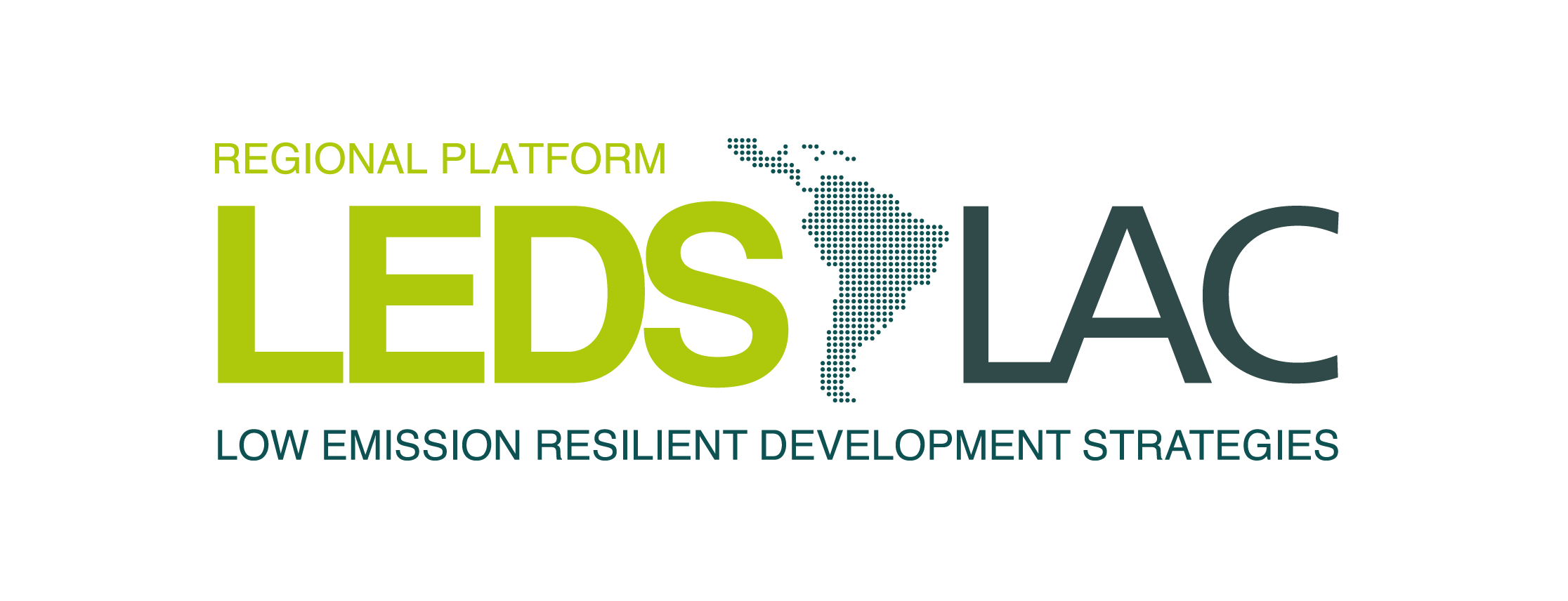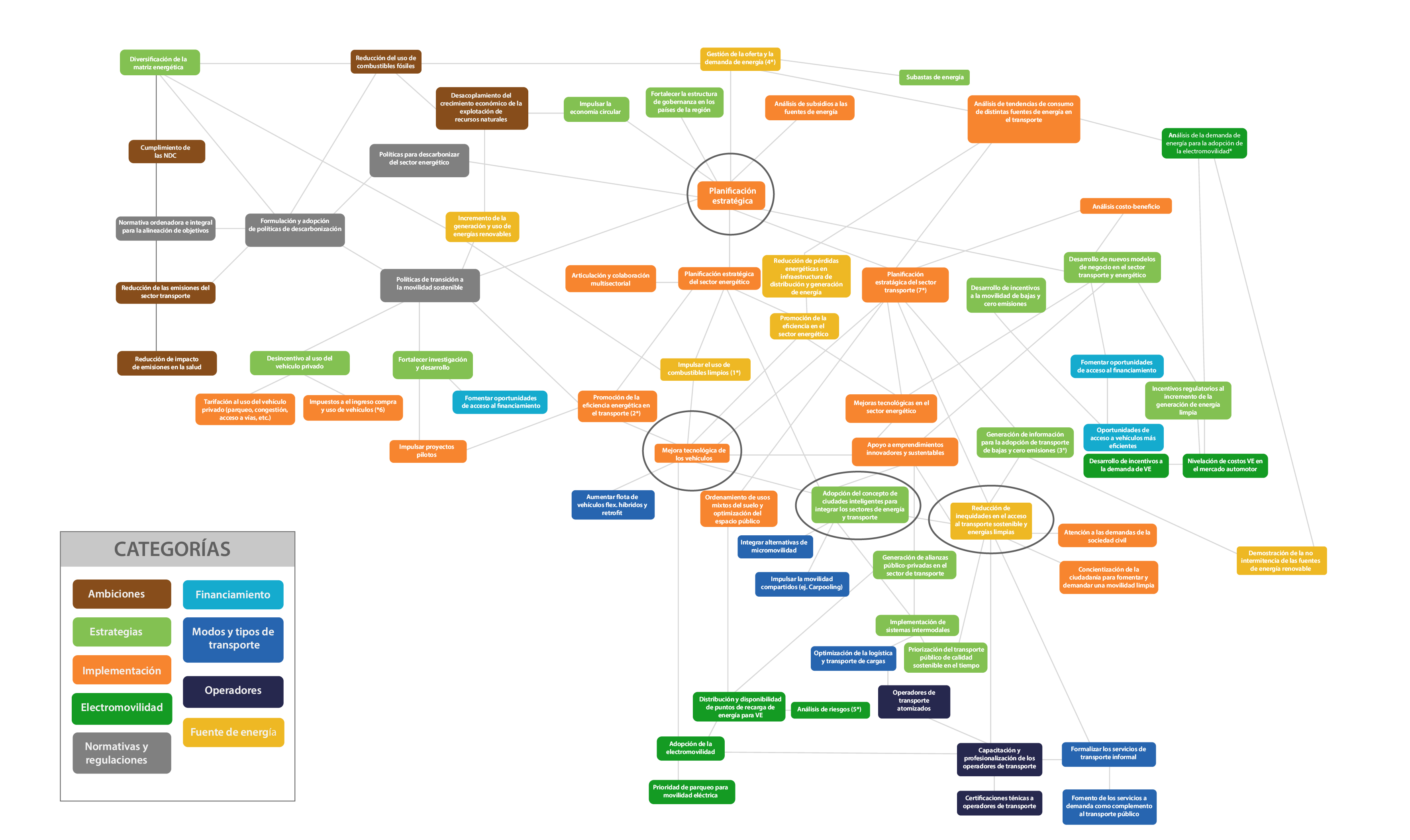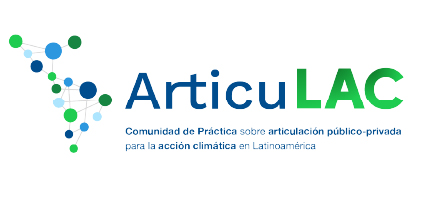
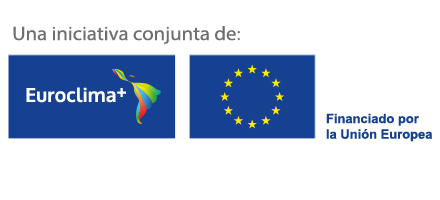

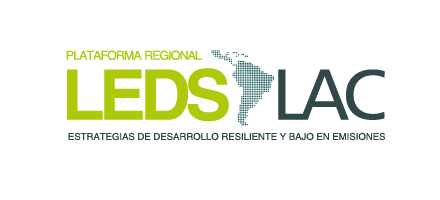
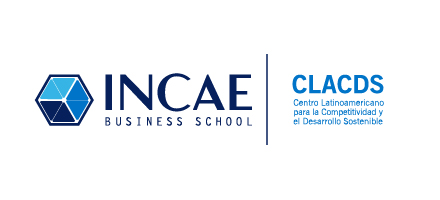
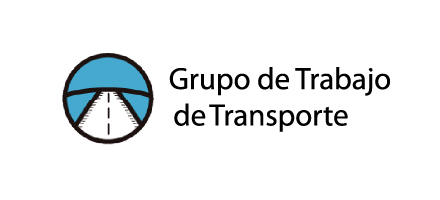
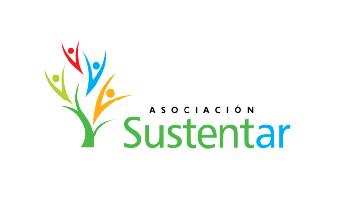
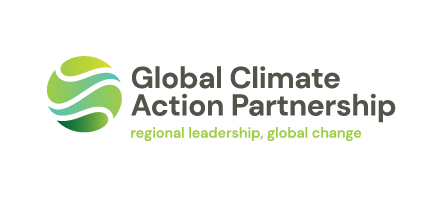
Link between energy and decarbonization
of transportation: roles of public and private stakeholders
CONCEPTUAL MAP
Link between energy and decarbonization of transportation: roles of public and private stakeholders
Energy and transportation are sectors of great relevance for society and the environment, whose interaction has a complexity that is reflected in the diversity and multiplicity of elements that are directly or indirectly related to each other.
In order to make visible and understand the interdependencies that exist when formulating and promoting strategies for the decarbonization of transportation and thus contribute to the energy sustainability of the Latin American and Caribbean economy, a conceptual map has been developed that represents the main elements of this system based on a network analysis, based on the discussions of the aforementioned workshops.
The network representation aims to identify and highlight the neuralgic points that are enabling for other elements of the energy and/or transport sector, in order to decarbonize transport. It is intended to be a useful and simplified tool to generate strategies and focus intervention efforts on these points, generating an effect in more than one action, facilitating the integration of both sectors in the search for sustainability and carbon neutrality in the region.
This section presents the map in an interactive format that allows to visualize the entire network in a comprehensive way but also to focus on specific nodes and connections.
CATEGORIES
Description of categories

Ambitions

Strategies

Regulations

Implementation

Types and modes of transportation

Financing
Energy sources
Electromobility

Operators
MAIN FINDINGS
The analysis of the relationships illustrated in the map indicates that the decarbonization of transportation requires a paradigm shift. On the one hand, reference is made to the adoption of a smart city concept that implies recognizing cities as living ecosystems in which the use of data allows optimizing their operation through the systematization and modernization of processes and services. On the other hand, the integration of the energy and transportation sectors is presented, which requires understanding transportation as part of the energy sector and vice versa, since transportation does not exist without the generation, distribution and consumption of energy.
As with any paradigm shift, this requires collaborative work in multiple areas to be developed and requires a multi-sectoral approach to implementation. It implies a transition in which both the public and private sectors understand their needs and obtain mutual benefits, thus reducing market impacts. To achieve this, it is necessary to strengthen the governance structure in the countries of the region in the areas of transportation and energy in order to boost this collaboration at a multi-stakeholder level.
The formulation and adoption of policies for the transition to sustainable mobility that include both sectors are essential to generate change. Regulatory frameworks must include mechanisms and incorporate incentives that encourage the generation and use of clean energy in line with the promotion and development of low and zero emission mobility.
It is therefore necessary to work on strategic planning by linking the transportation and energy sectors in order to diversify the generation and consumption matrix. At the same time, diversifying modes of transportation is an enabling factor for achieving decarbonization. The transition to sustainable or more energy-efficient modes of transportation contributes to reducing inequalities in access to transportation and the consumption of clean energy. In this sense, the use of alternative fuels and the implementation of operational improvements are means to initiate a transformation towards more efficient and sustainable mobility. However, these changes must be accompanied by technological improvements in vehicles, as well as the accessibility of these technologies in countries with developing economies.
Access to efficient financing, although not highlighted in the network, is an implicit and underlying element necessary to promote decarbonization strategies, and should not be disregarded. Efficient financing implies a broad knowledge of market conditions and the risks associated with the investment to be made to support the decarbonization of the sector, reducing investment uncertainty, which translates into lower interest rates and greater positive effects, i.e., a more efficient use of financing.
It is important to mention that the elements characterized are framed within energy efficiency measures that seek to reduce dependence on conventional energy sources, in addition to a better use of resources, including energy resources, through the management of energy demand. This ensures energy efficiency in the transportation sector.
Graphically representing the relationships between energy and transport allows us to visualize the connections and interdependencies in which almost all elements are, directly or indirectly, related to each other.
Three categories (elements that are grouped under a theme) with greater representation in the interconnection map are identified:
Implementation
with 17 elements
Strategies
with 14 elements
Energy sources
with 7 elements
Within this category, four elements stand out with the highest number of connections:
Strategic planning (in general for both sectors), with 9 connections.
Reducing inequalities in access to sustainable transportation and clean energy, with 9 connections.
Adopting the concept of smart cities to integrate the energy and transportation sectors, with 8 connections.
Technological improvement in the vehicles, with 8 connections.

